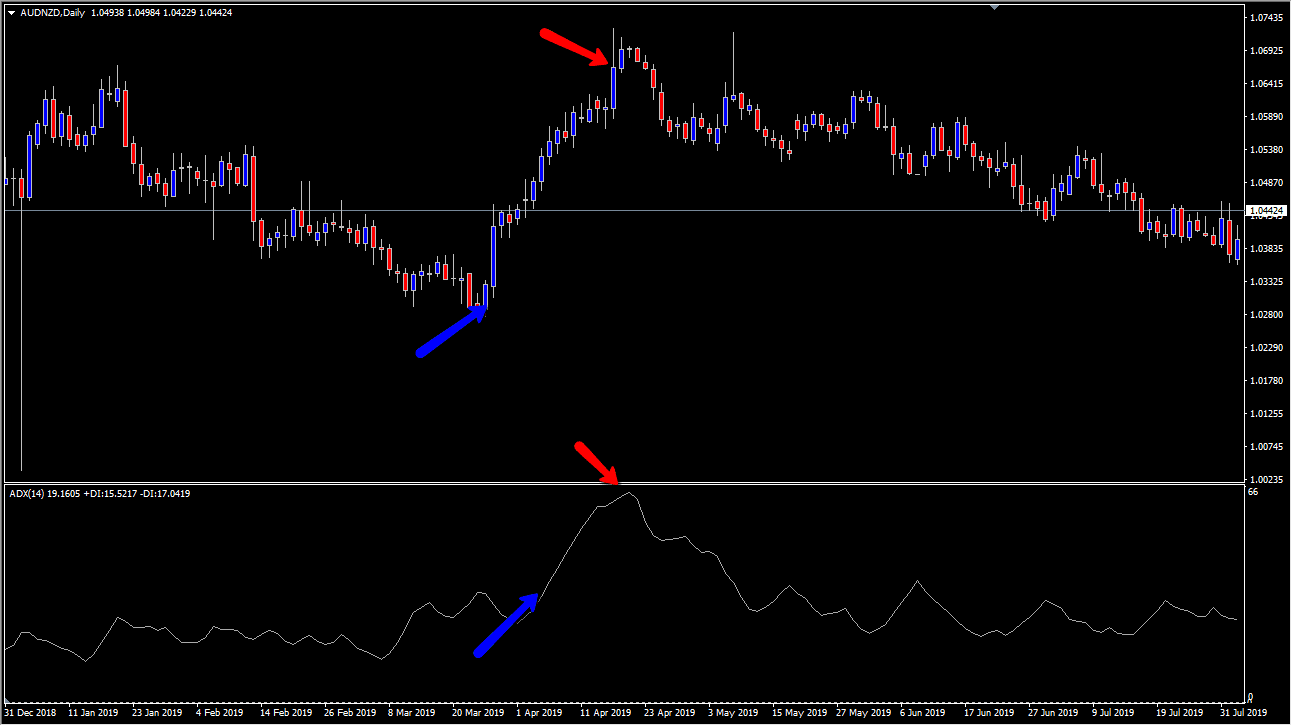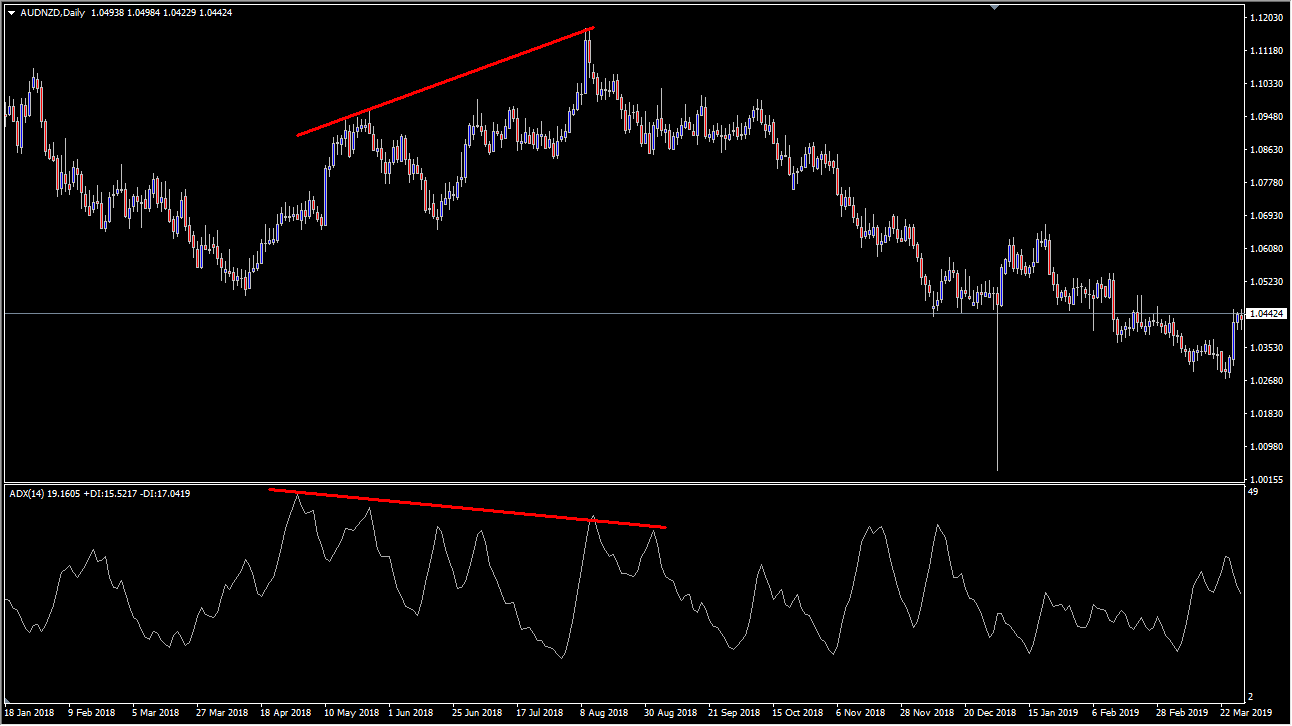Warnings and divergence
The ADX can also come into play when looking for divergence.
This is different to most indicators, because this is a situation where the markets not only could be traded against but could also indicate a trend is ending.
This means that you will be able to keep more of your profits if used properly. The underlying thesis is that momentum, and therefore price, is starting to calm back down in what has been a strong trend.
While many traders will look at candlesticks, where the support and resistance breaks, and moving averages to determine the entry or exit, many of them don’t understand that one of the bigger factors to pay attention to is momentum.
If the asset is moving slowly, this suggests that a currency pair is somewhat fairly valued, or at least not so much out of balance when it comes to pricing. However, when there is momentum that is strong and climbing, it means that prices are trying to get to a place where supply and demand equalizes.
In the chart below, notice the blue and red arrows.

The blue arrow shows that there was a large candle that traders could have taken as a buy signal, especially since the ADX started to rise higher.
This shows not only does the market look like it is breaking out, but it also is gaining momentum. Later on, the red arrows point out where the market started to slow down as the markets leveled off, and the ADX started to turn later.
The ADX started to paint the picture that the consolidation wasn’t going to continue the uptrend, and therefore the trader using ADX would have exited with more of the profits that the average trader would.
Let’s take a look at another chart.

Divergence is when price is doing one thing, and momentum is doing the other. While most of the time traders will use oscillators to spot incidents of divergence, the ADX indicator also can be used as a sign when NOT to take a trade.
The chart above shows the Australian dollar/New Zealand dollar pair shows that it was going higher for a while, while the ADX readings continued to make lower higher. This means that although the momentum was going back and forth, the price was giving no sense of the underlying uncertainty.
If you use the ADX indicator, you probably know better than to get involved in the move to the upside. Shortly after this move was made, the market rolled right back over. This was a good warning for the trader to stay out in general. However, unlike some oscillators, divergence is typically used as a warning, not necessarily a trade signal.
Any opinions, news, research, analyses, prices or other information contained on this website is provided as general market commentary and does not constitute investment advice. ThinkMarkets will not accept liability for any loss or damage including, without limitation, to any loss of profit which may arise directly or indirectly from use of or reliance on such information.